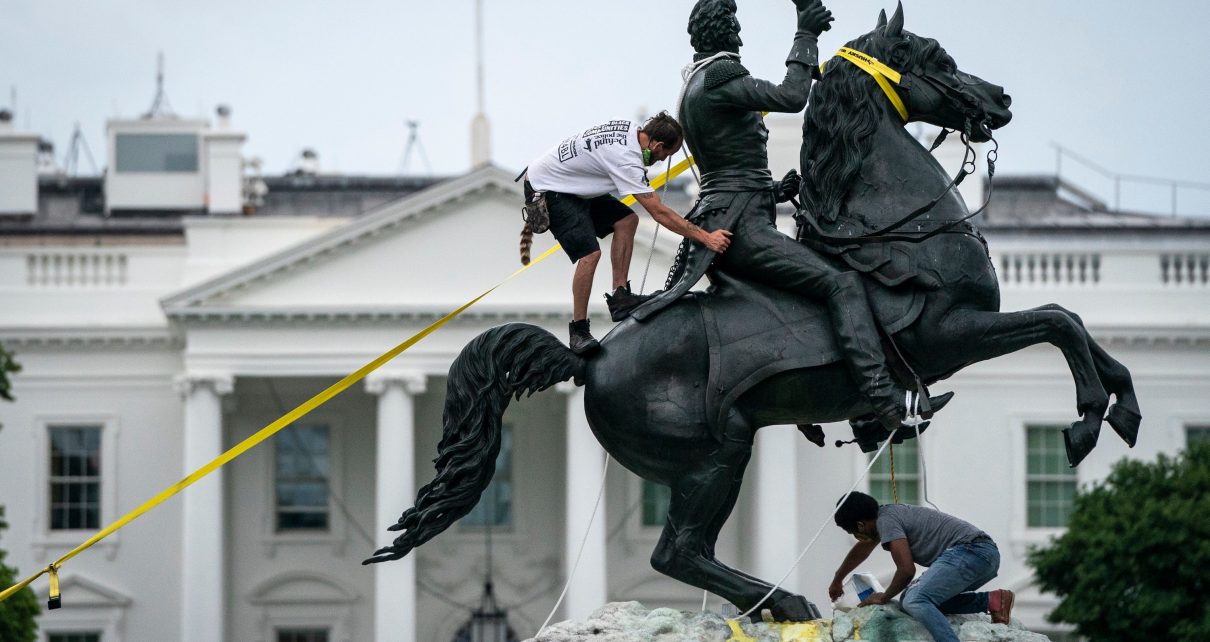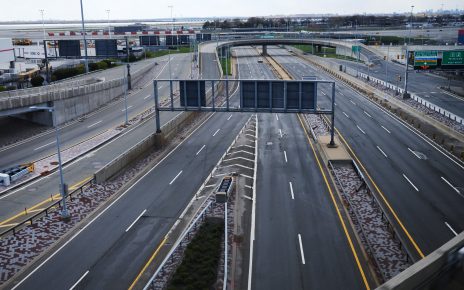With the wave of statue-felling currently sweeping across the United States and United Kingdom, it is clearer than ever that we are living at a time of iconoclasm. From the Protestant Reformation to the American War of Independence, image-breaking has served as a powerful demonstration of a break with the old order. These are not simply acts of destruction: they should rather be understood as moments of what the philosopher Bruno Latour has called “Iconoclash,” generating new images that can be powerful agents of social change. This is what we are witnessing from Birmingham, Ala., to Bristol, England, as, inspired by the Black Lives Matter movement, obelisks are toppled, statues are rolled into rivers, and Black ballerinas dance around the graffitied bases on which Confederate generals stand.
How is it that statues can act as such political lightning rods? In a course I teach on “Statues and Public Life,” I encourage my students to think of them as ideological powerhouses: physical objects that compress whole systems of authority into bodies of bronze or marble. Elevated on bases and columns, accompanied by inscriptions and framed by grand, civic architecture, they enshrine the deeds of the men (and it is usually men) that they represent. It is no accident that monuments commemorating the defenders and beneficiaries of slavery draw directly on traditions inherited directly from other slave societies—those of Ancient Greece and Rome. Nor that classical marble statuary is synonymous with the celebration of whiteness.
For example, on one side of the Atlantic, a presidency that overtly flaunts its support for white supremacy proclaims its commitment to neoclassical architecture and deploys the U.S. military and National Guard against its own people under the official mission name Operation Themis (the Greek goddess of divine law). On the other side, a prime minister employs his classical training to assert social and political authority, displaying a bust of Pericles in his study whilst concealing his lies and ineptitude under an inverted pyramid of Greek and Latin piffle.
Looking to the Greco-Roman past need not, however, be the same as perpetuating its power structures. Classical statues were brightly painted, never white, despite protests from those who would appropriate ancient sculpture for right-wing agendas. And while antiquity has certainly bequeathed us oppressive forms of monumentality, ancient history also provides many examples of their dismantling. The felling of Confederate monuments and the statue of Edward Colston, in Bristol, evokes the Roman practice that is known as damnatio memoriae (or “condemnation of the memory”), in which the portraits of public figures that had fallen from grace were ritually removed and destroyed. The historian Cassius Dio describes the dramatic scene of the execution of Sejanus, head of the Praetorian Guard and hated deputy of the emperor Tiberius, when the Roman people “hurled down, beat down, and dragged down all his images, as though they were maltreating the man himself.” The head of the imperial police, in other words, was forced to undergo the same brutality that he had meted out to so many vulnerable individuals.
This equivalence between statue and body is also a striking feature of recent events, as when the fellers of Colston kneeled on his neck in an echo of the death of George Floyd. In an act of symbolic revenge, a figure who profited from the oppression of Black bodies (and whose monument was itself a perpetuation of this oppression) was subjected to the same violence perpetrated by his 21st-century successors.
From Colston to Columbus, one of the most shocking features of such scenes is the helplessness of the statue itself: beheaded, de-skirted, bound and felled, the once proud image appears hopelessly vulnerable. Yet there is a powerful paradox here: at the very moment that the statue is treated as a body and subjected to ritual violence, its status as a merely inanimate object is most strikingly revealed. As the Bristol poet Vanessa Kisuule observes in her compelling meditation on Colston’s fall, “this whole time, you were hollow.”
Iconoclasm and damnatio memoriae teach us that monuments are only as powerful as the human will that keeps them in place. With a shift in public attitude towards the living bodies of Black individuals, the imposing bases and columns that had enshrined the hollow bodies of their ancestral oppressors no longer have the ability to elevate and protect. Now the work begins to dismantle the less visible institutional structures that such monuments were designed to fortify.




